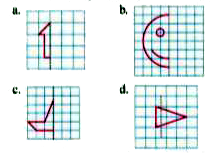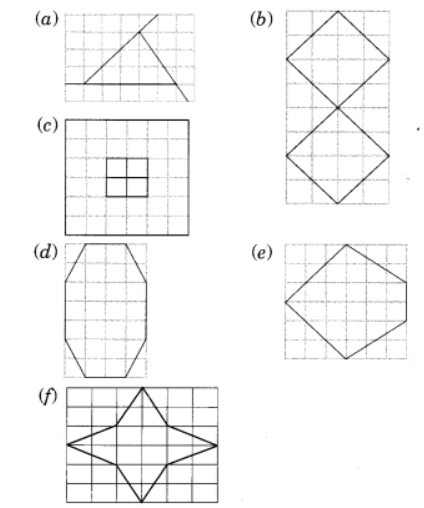Give an example of a geometrical figure which has neither a line of symmetry nor a rotational symmetry.
To provide a step-by-step solution to the question, we will analyze the requirements for a geometrical figure to have symmetry and then identify an example that meets the criteria of having neither line symmetry nor rotational symmetry.
1. Understanding Symmetry:
- Symmetry in geometry refers to a balance or similarity in shape and size on either side of a dividing line (line symmetry) or around a central point (rotational symmetry).
2. Defining Line of Symmetry:
- A line of symmetry is a line that divides a figure into two identical halves that are mirror images of each other. If a figure can be folded along this line and both halves match perfectly, it has line symmetry.
3. Defining Rotational Symmetry:
- A figure has rotational symmetry if it can be rotated (less than a full circle) about a central point and still look the same as it did before the rotation.
4. Identifying a Suitable Figure:
- We need to find a geometrical figure that does not possess either line symmetry or rotational symmetry.
5. Example of a Scalene Triangle:
- A scalene triangle is a triangle where all three sides are of different lengths, and all three angles are different.
- Since all sides and angles are different, there is no way to draw a line that divides the triangle into two identical halves (no line of symmetry).
- Additionally, if you rotate a scalene triangle around its center, it will not look the same at any angle of rotation less than 360 degrees (no rotational symmetry).
6. Conclusion:
- Therefore, a scalene triangle serves as an example of a geometrical figure that has neither line of symmetry nor rotational symmetry.
Final Answer:
An example of a geometrical figure that has neither a line of symmetry nor a rotational symmetry is a scalene triangle.
---
- Symmetry in geometry refers to a balance or similarity in shape and size on either side of a dividing line (line symmetry) or around a central point (rotational symmetry).
- A line of symmetry is a line that divides a figure into two identical halves that are mirror images of each other. If a figure can be folded along this line and both halves match perfectly, it has line symmetry.
- A figure has rotational symmetry if it can be rotated (less than a full circle) about a central point and still look the same as it did before the rotation.
- We need to find a geometrical figure that does not possess either line symmetry or rotational symmetry.
- A scalene triangle is a triangle where all three sides are of different lengths, and all three angles are different.
- Since all sides and angles are different, there is no way to draw a line that divides the triangle into two identical halves (no line of symmetry).
- Additionally, if you rotate a scalene triangle around its center, it will not look the same at any angle of rotation less than 360 degrees (no rotational symmetry).
- Therefore, a scalene triangle serves as an example of a geometrical figure that has neither line of symmetry nor rotational symmetry.
An example of a geometrical figure that has neither a line of symmetry nor a rotational symmetry is a scalene triangle.
Topper's Solved these Questions
Similar Questions
Knowledge Check
- Question 1 - Select One
The number of lines of symmetry of a rectangle is
A0B1C2D4 - Question 2 - Select One
The number of lines of symmetry of a circle.
A1B2C10DInfinite many - Question 3 - Select One
Which of the following geometrical figures has exactly one line of symmetry ? (i) A rectangle (ii) A semi circle (iii) A regular pentagon (iv) A rhombus
AA rectangleBA semicircleCA regular pentagonDA rhombus
Give an example of a figure that has a line of symmetry but does not have rotational symmetry.
View SolutionName any two figures that have both line symmetry and rotational symmetry.
View SolutionName any two figures that have both line symmetry and rotational symmetry.
View SolutionComplete the figures along the line of symmetry:
 View Solution
View SolutionTrace each figure and draw the lines of symmetry, if any:
 View Solution
View Solution
